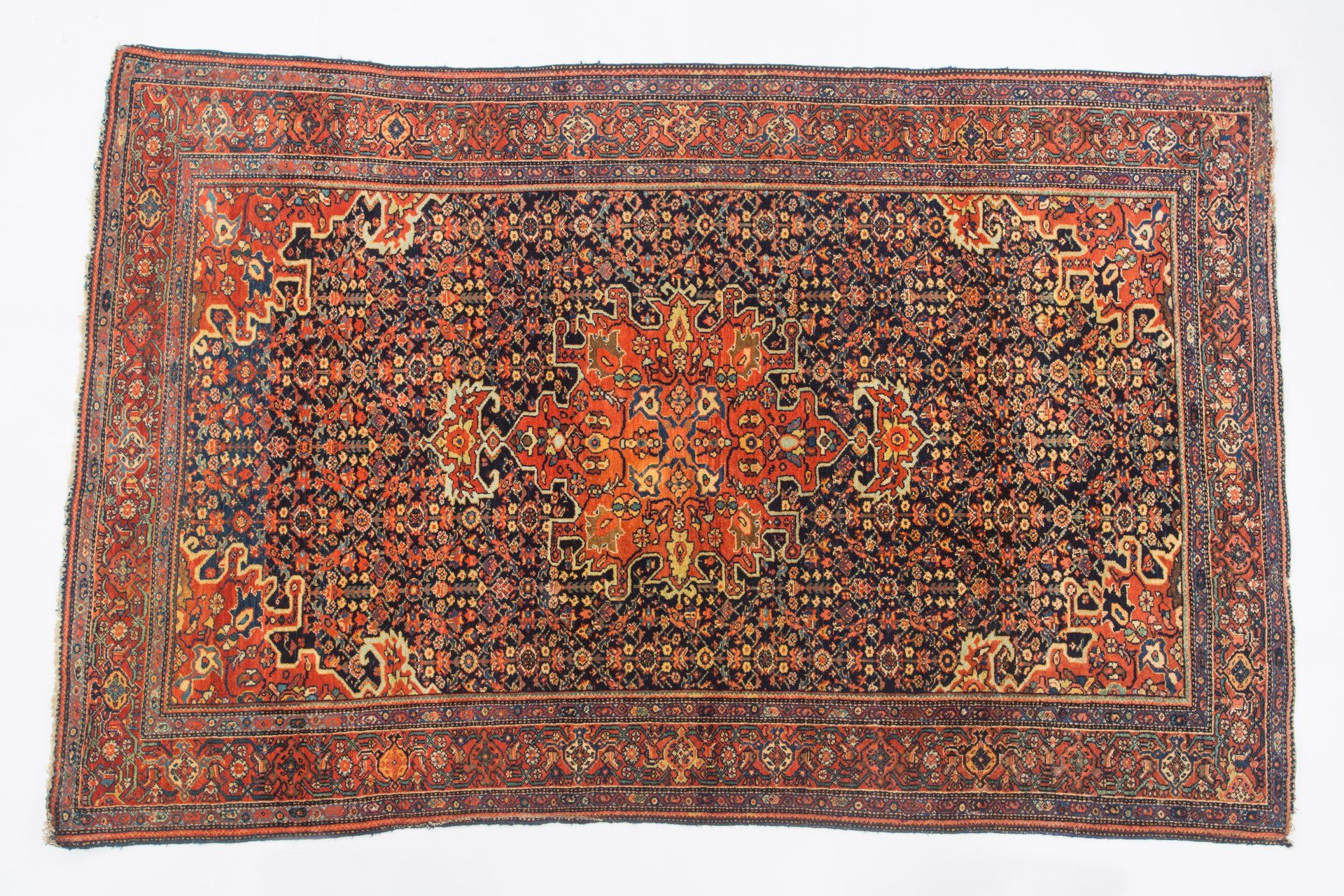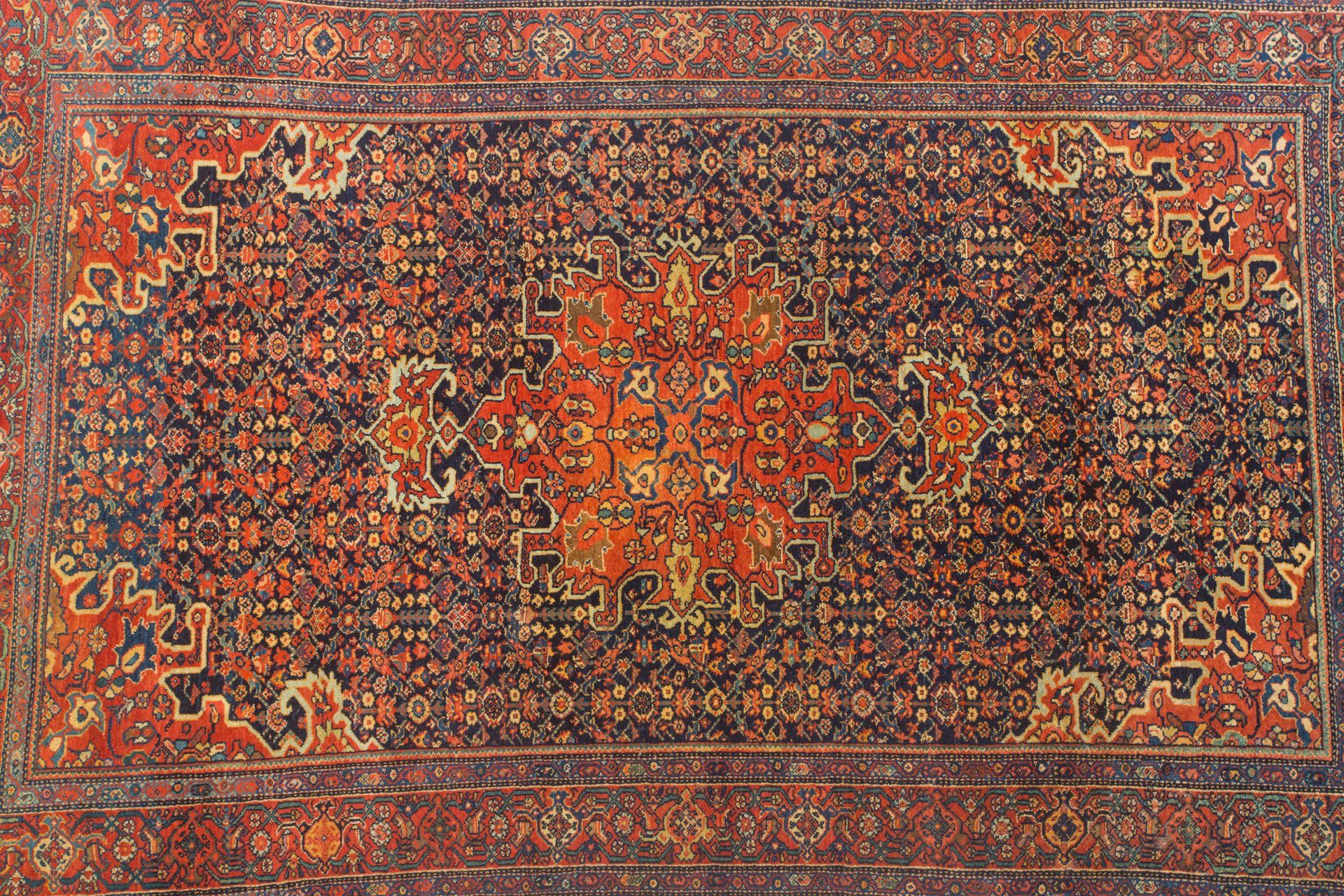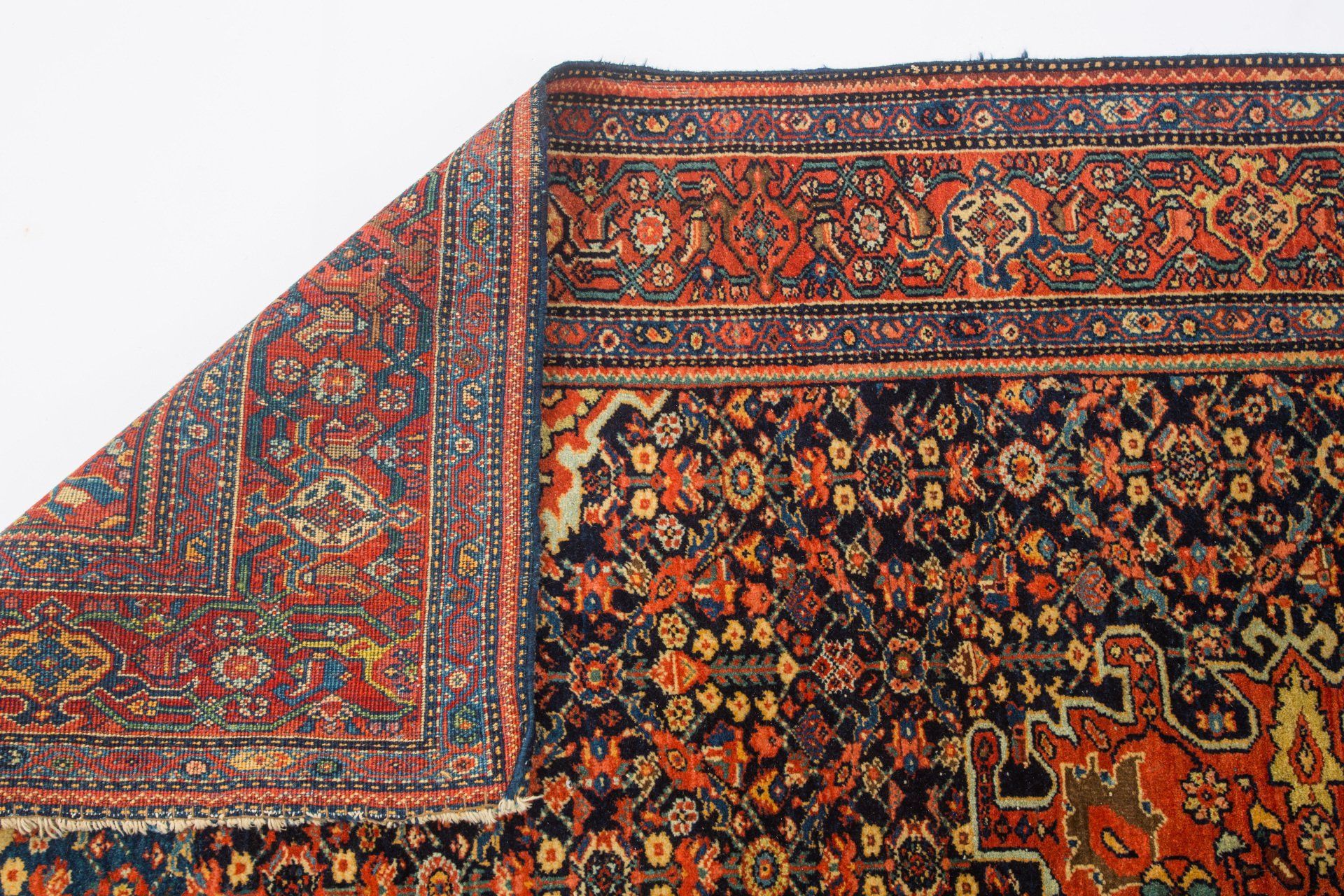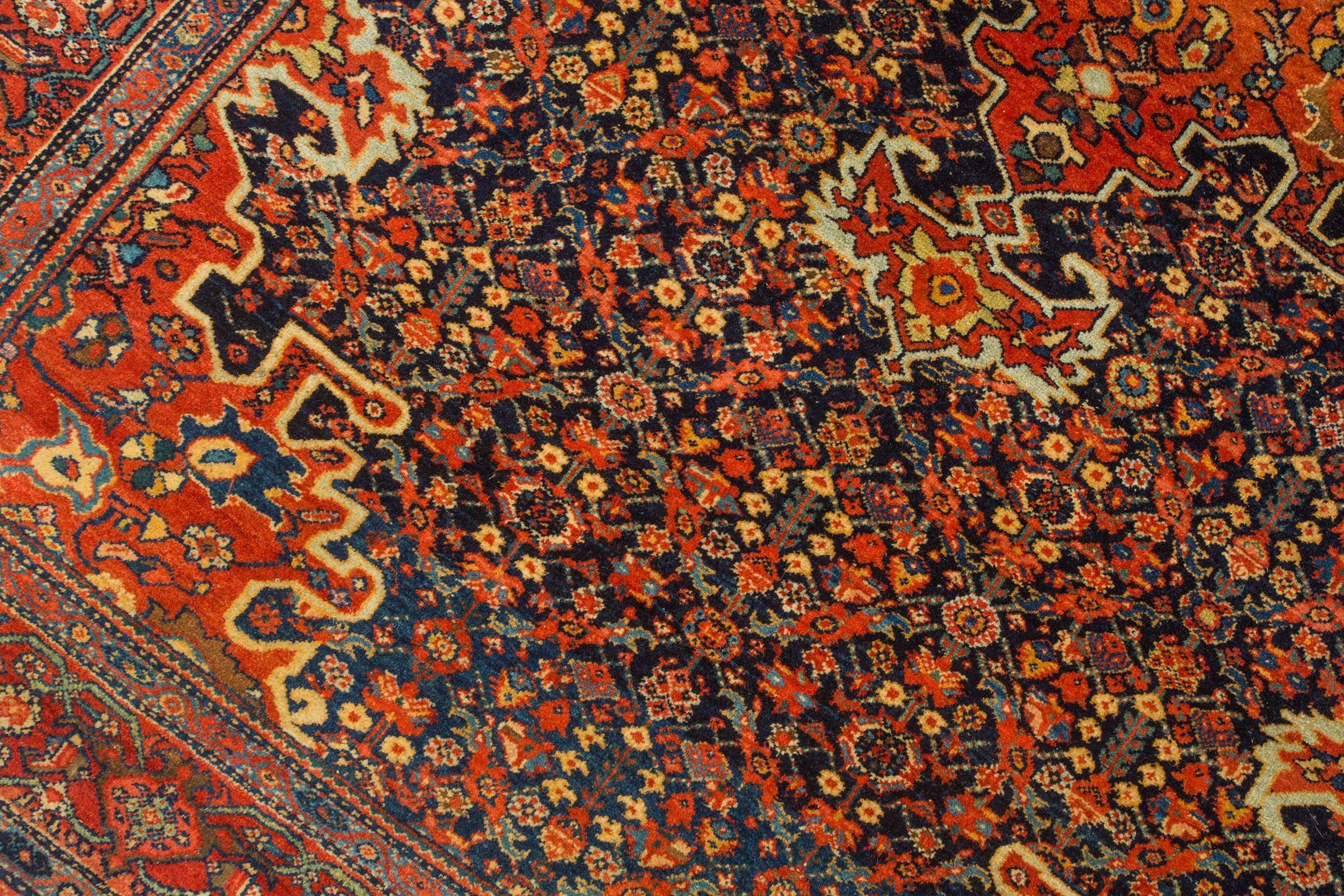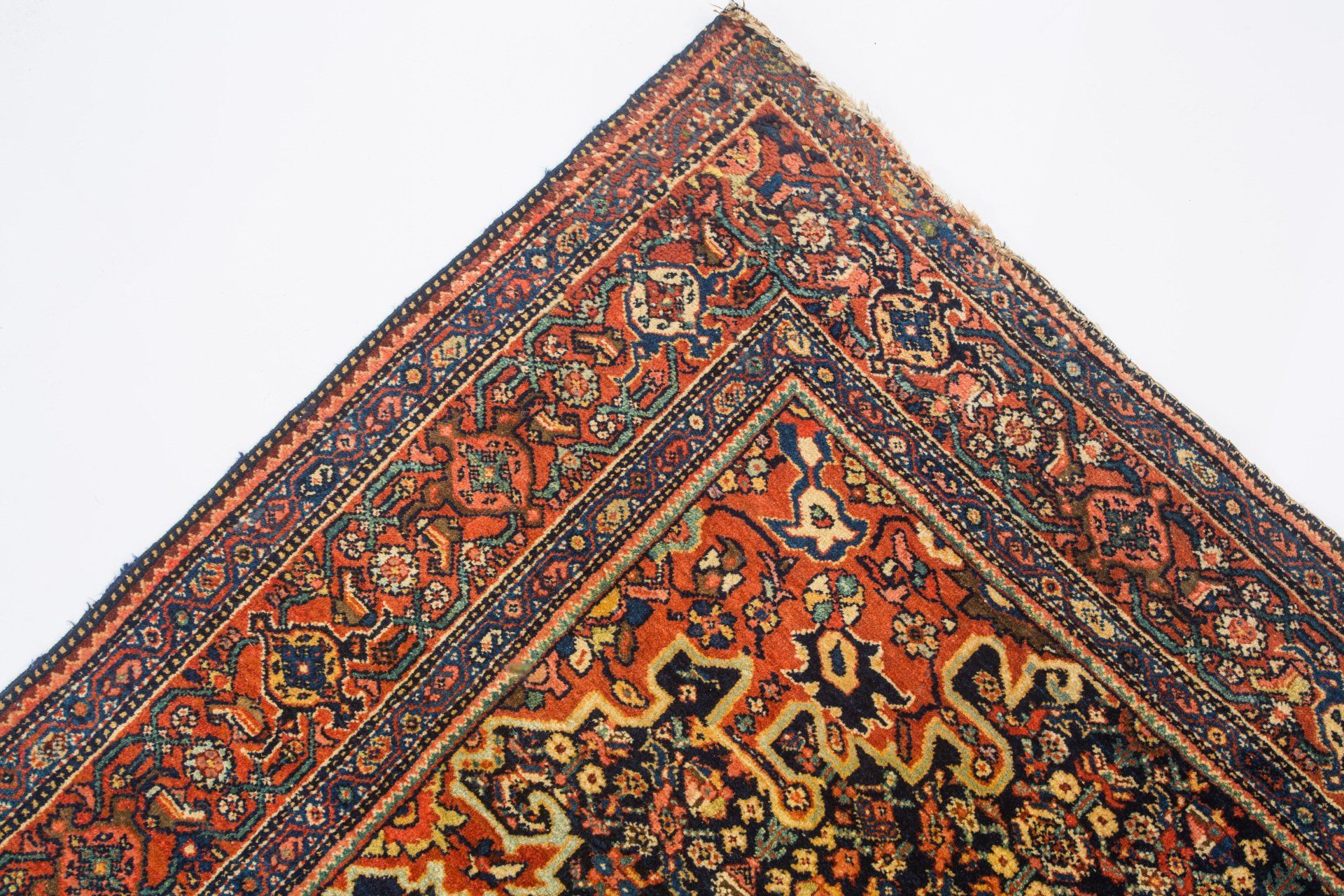Classic Ferahan Sarouk 1870
Ferahan Sarouk INTENSE DESIGN VIRTUES third quarter 19th century
.
From an Australian Collector
Ferahan Sarouk carpets produced around the wider Arak (formerly Sultanabad) area from about 1850-1910 earned a deserved reputation as amongst the most desirable and imaginative finely woven carpets in Persia. As these things go, they morphed in style around 1910- 1920 into the differently woven Mahajirhan Sarouk fashion (quality examples of which are also in demand) and then disappeared entirely.
Their desirability rests not only on fine weaving, and excellent wool. Many of the better examples were commissioned by aristocrats or wealthy merchants who encouraged creativity, in an actively competitive way; rugs during this period, as before, were direct illustrations of an individual’s wealth, power and prestige.
Beyond this lay a more fundamental and seemingly contradictory set of motivations by the weavers. At one and the same time they sought to emulate the great court carpets in finesse and design, and yet-- they applied rustic or village, and even tribal elements and nuances to their designs. The result was a cavalcade of creativity.
So, a village-based genre came into being which produced primarily an approx. 6x4 rug size format, and also provided, if more rarely, larger formats, which command increasingly high prices, due to their rarity, visual excitement and grandeur.
The artistic achievement of this “school” had to do with marrying elegance and a degree of formalism with whimsy, and design innovation. They offer a charm and a certain magic beyond that of court and most city carpets ..
As in any area or era, there is a quality spectrum ranging from mediocre to highly superior. Superiority is judged of course as to weave and wool quality. It is rather unusual, though, to encounter pieces made before 1890 -which are bona fide Ferahan Sarouks- with poor wool or weaving: standards were upheld during this period, and natural dyes employed universally.
Thus, as an investment collectible to adorn the home we believe the ultimate criterion is aesthetics, this being an art form, after all.
Ferahan Sarouks have been a special area of interest for us over the decades both from artistic and investment perspectives.
Allowing for personal taste, our suggestions are few and simple. A Ferahan Sarouk ought to display a wide colour palette, fine drawing and delicate, sometimes “intense” detail. The best pieces also display balance in the use of space.
We have seen many finely woven pieces which in our view are garish and lack one of the two key artistic elements intrinsic to the better examples of this genre – elegance. Sometimes they are overly cluttered; the drawing artistry is muddled or lost. In other cases odd and ineffective design devices are used, detracting from or interfering with an otherwise good design. The era of the Ferahan Sarouk was rife with experiment, not all of them successful.
The other important attribute, when it can be found, is original artistic creativity, even serendipity, -- or effective design innovation within the compass of this rug type and the unique standards of its prime period.
On average, we examine between 30-40 antique Ferahan Sarouks to achieve one acquisition, for the benefit of our clients.
This 150-year-old highly collectible piece demonstrates the virtues of many older Ferahan Sarouks. These include very fine weaving, “intense “drawing and superior artistic execution with excellent natural dyes. The density of these rugs from the earlier period also yield a characteristic leathery feel or “handle “as is said in the trade.
The detail of the borders, which please observe, provide one indication of age – they have an almost etched on quality.
Those interested in the rug, or in connoisseurship generally, ought spend a moment with the close ups of this Herati design, and the craftsmanship on display. There is a panoply of colour and integrated design to observe. Note that the medallion and particularly its pendants appear to lie slightly above the main field, a feat of engineering for the eye which is remarkable.
The dye master involved in this carpet deserves applause, which is made clear by a close inspection. From the array of blues, especially the deep royal blue at the end of the reserve to the yellows (probably created with saffron) to the peculiar very pale sandy borders of the medallion and pendants – a color which becomes very pale green elsewhere, this is a very fine show of technical mastery. The pale green may possibly have been derived from a mineral source. It is this color which enabled the weaver to create the trompe l’oeil impact described above – allowing a sort of 3-D effect.
In the hands of collectors for at least half its life or more, this rug is in very good condition indeed, with a nice degree of short pile fully intact.
It is of course usable and an investment piece.

